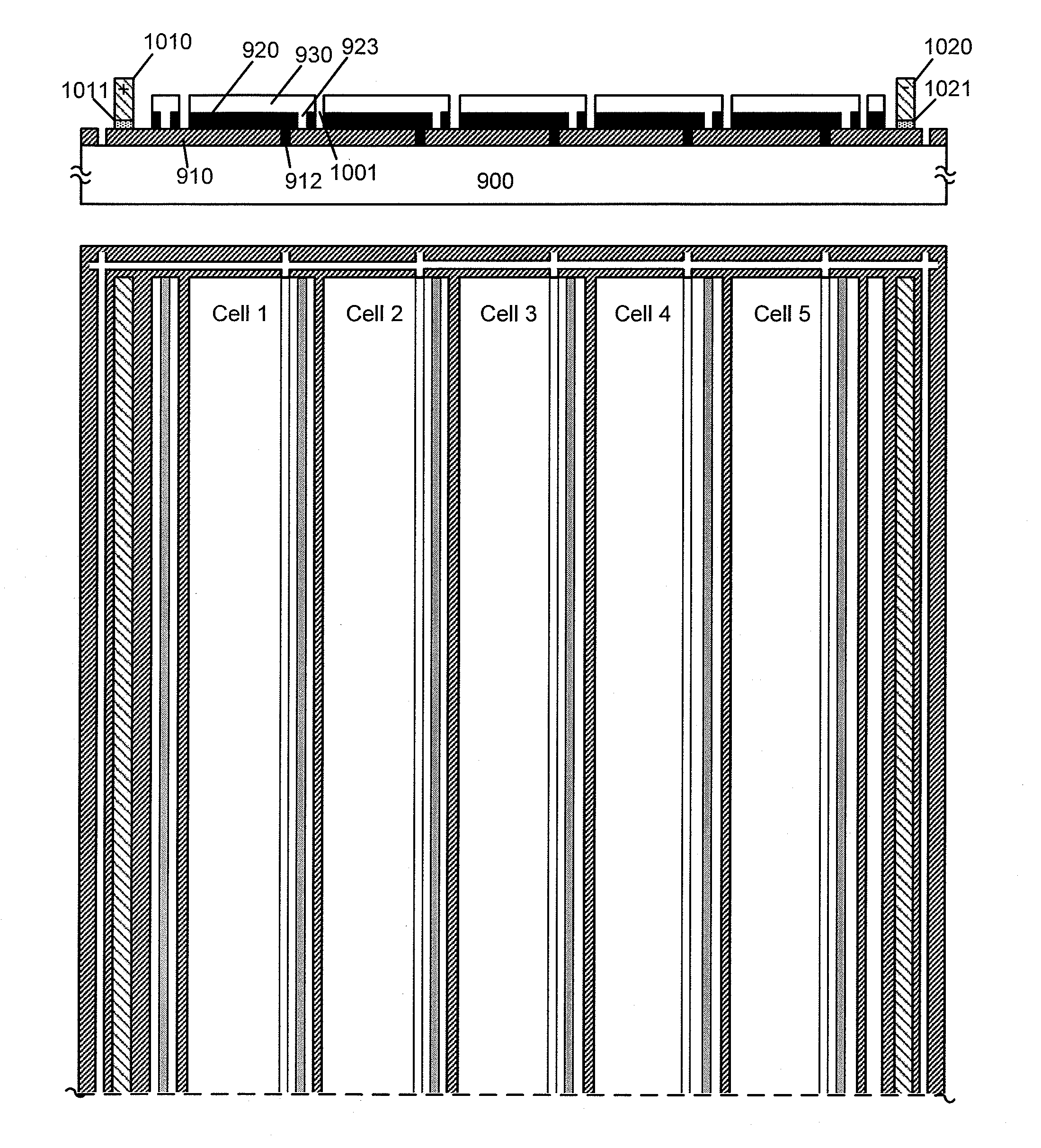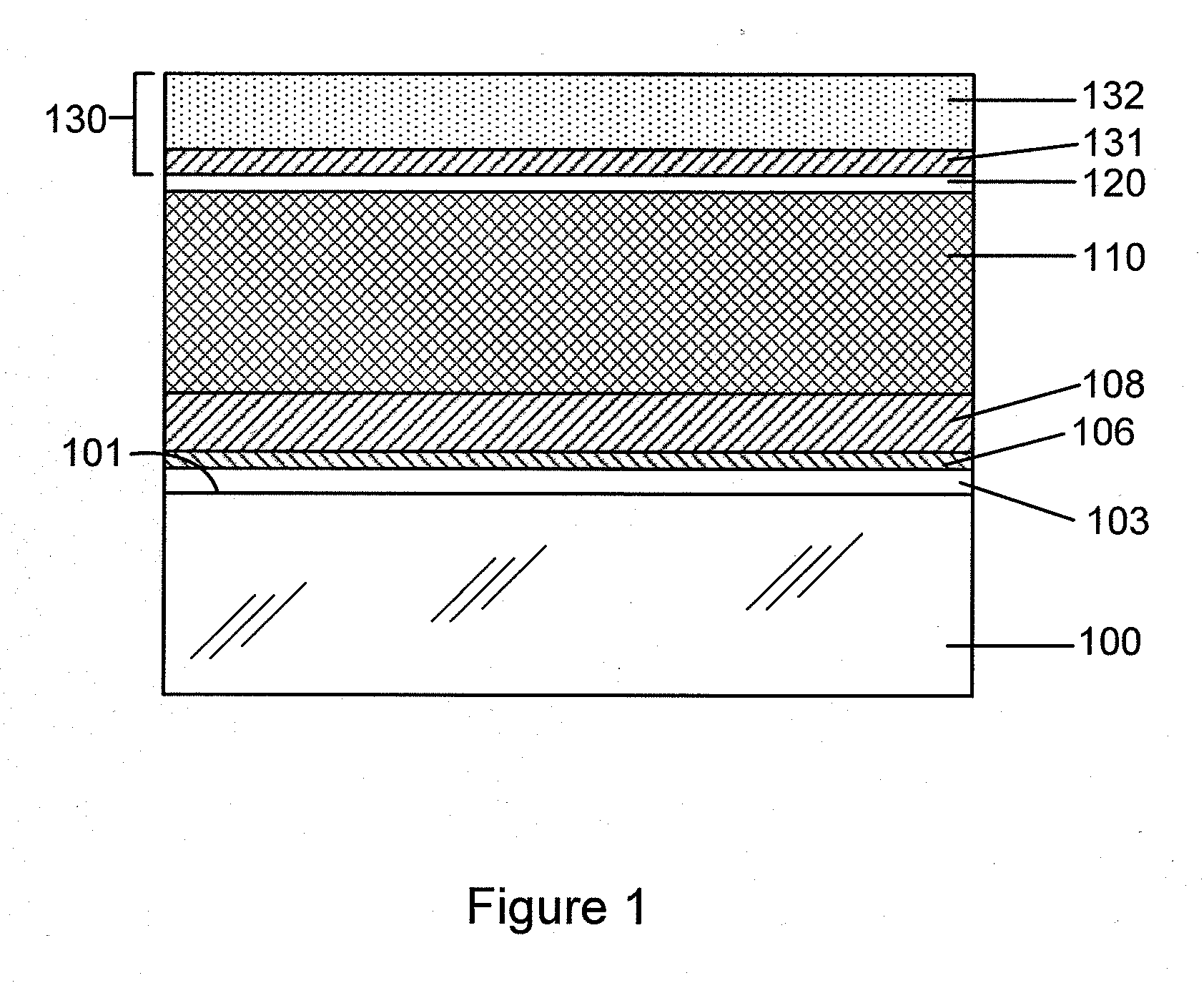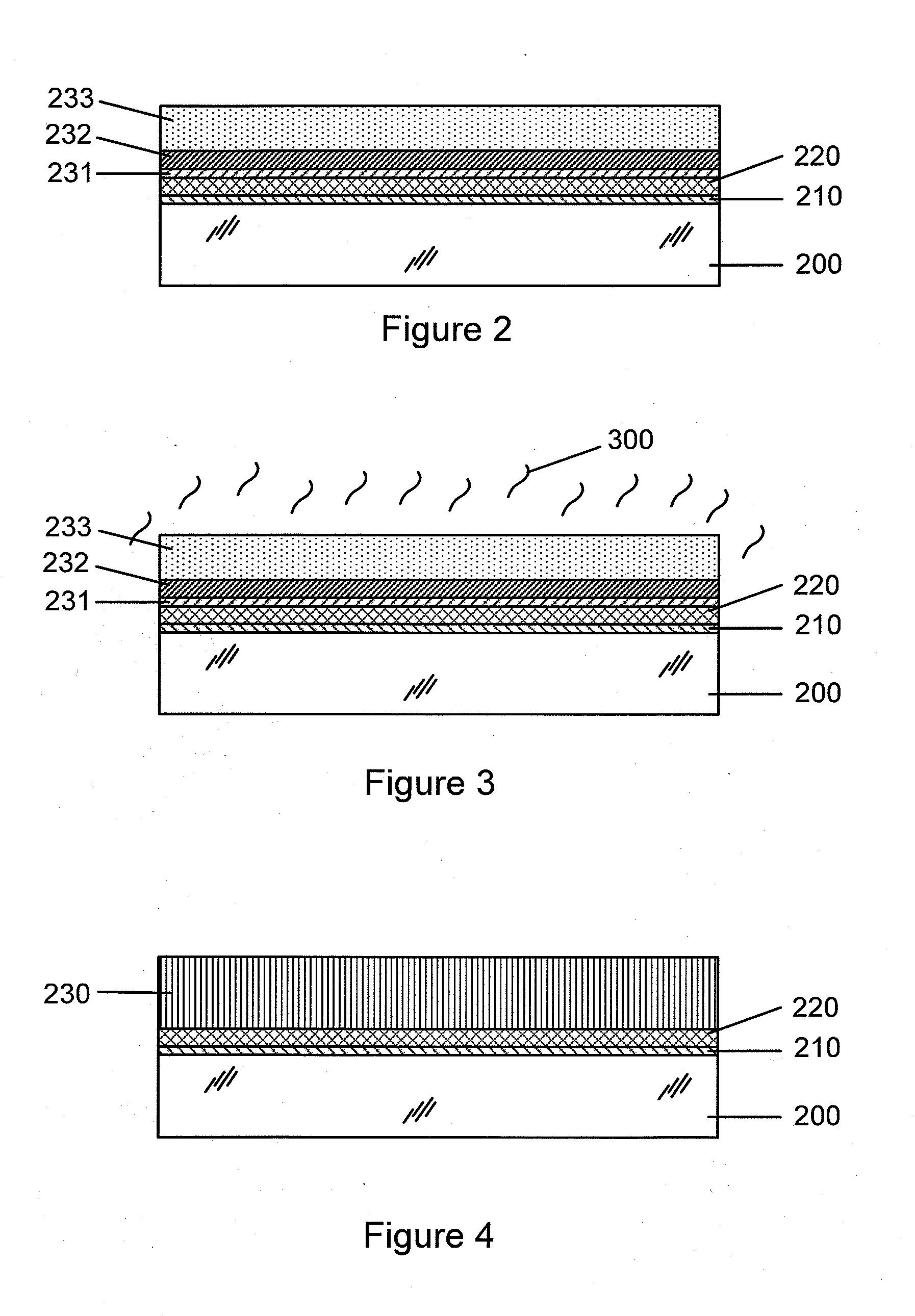Single Junction CIGS/CIS Solar Module
a solar module and single junction technology, applied in the field of thin film photovoltaic modules, can solve the problems of reducing the efficiency of solar cells, so as to achieve the effect of low cost, high efficiency and simplified thin film process
- Summary
- Abstract
- Description
- Claims
- Application Information
AI Technical Summary
Benefits of technology
Problems solved by technology
Method used
Image
Examples
Embodiment Construction
[0020]A cell structure and method for forming high efficiency thin-film photovoltaic modules are provided. The invention enables a high efficiency CIGS / CIS based thin-film photovoltaic cell from which an industrial sized panel having a form factor of 165×65 cm or greater is fabricated with a circuit efficiency of 12-15% or higher. Through work on thin-film absorber composition stoicheometry and grain structure tuning, the single junction CIGS / CIS photovoltaic absorber has an optimized opto-electric property characterized by an energy bandgap in 1.0 to 1.1 eV. This enables the cell to be used as a bottom device capable of coupling with top bi-facial devices to form a multi junction module with an enhanced module efficiency. Embodiments of the present invention may be used to include other types of semiconducting thin films or multilayers comprising iron sulfide, cadmium sulfide, zinc selenide, and others, and metal oxides such as zinc oxide, iron oxide, copper oxide, and others.
[0021...
PUM
 Login to View More
Login to View More Abstract
Description
Claims
Application Information
 Login to View More
Login to View More - R&D
- Intellectual Property
- Life Sciences
- Materials
- Tech Scout
- Unparalleled Data Quality
- Higher Quality Content
- 60% Fewer Hallucinations
Browse by: Latest US Patents, China's latest patents, Technical Efficacy Thesaurus, Application Domain, Technology Topic, Popular Technical Reports.
© 2025 PatSnap. All rights reserved.Legal|Privacy policy|Modern Slavery Act Transparency Statement|Sitemap|About US| Contact US: help@patsnap.com



